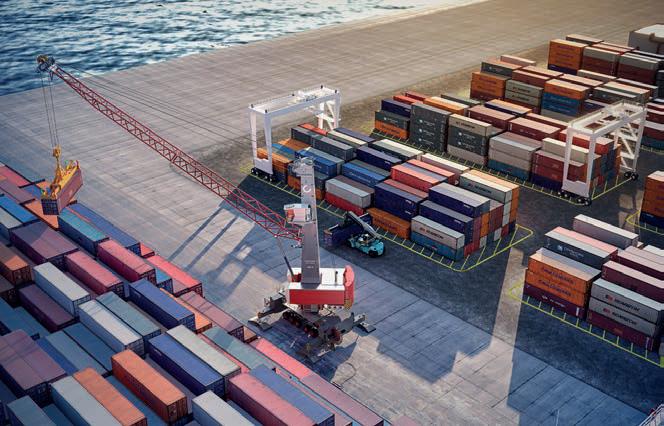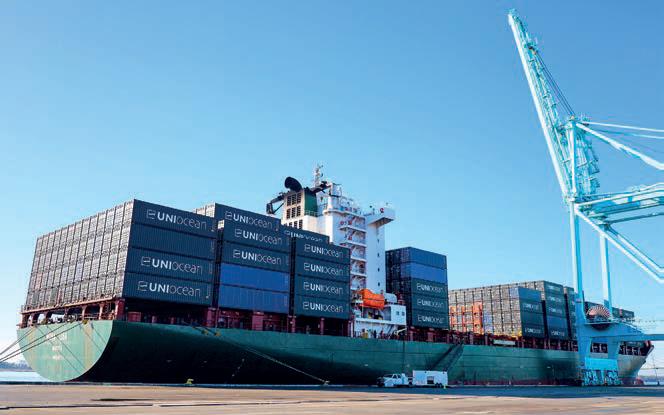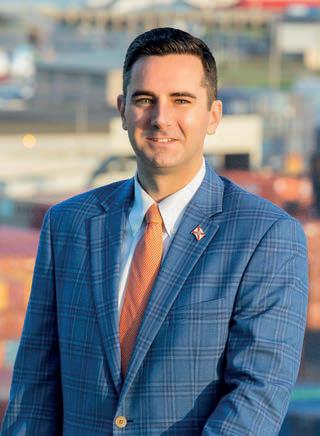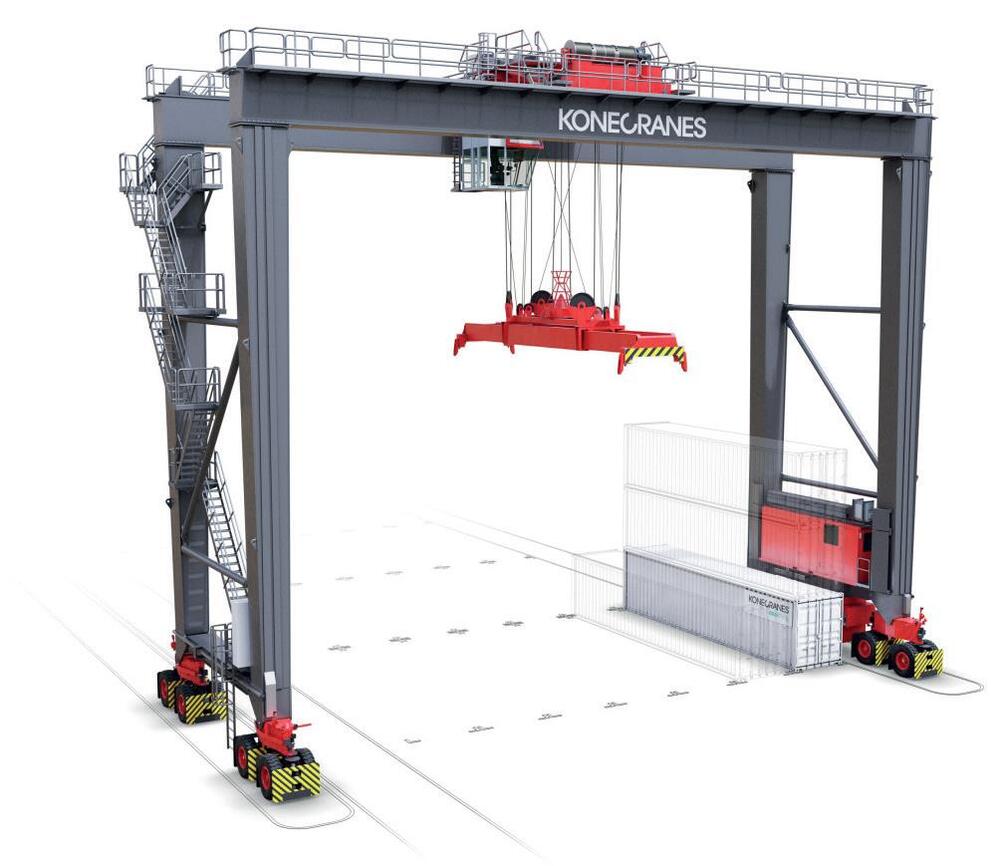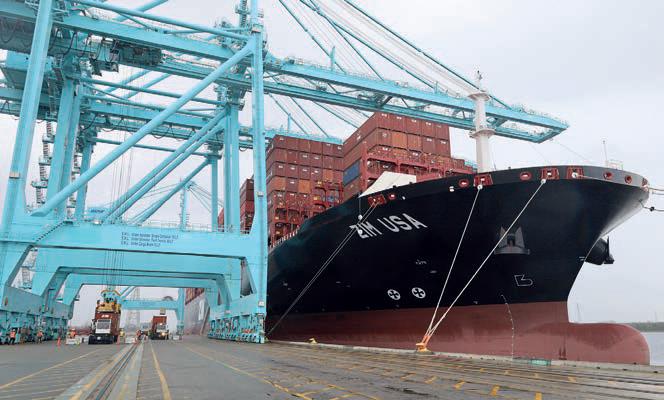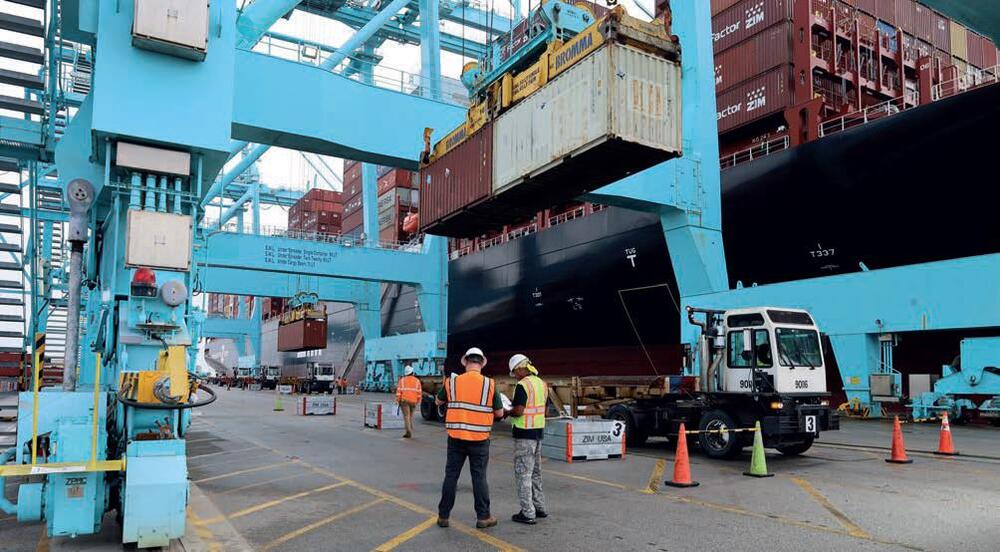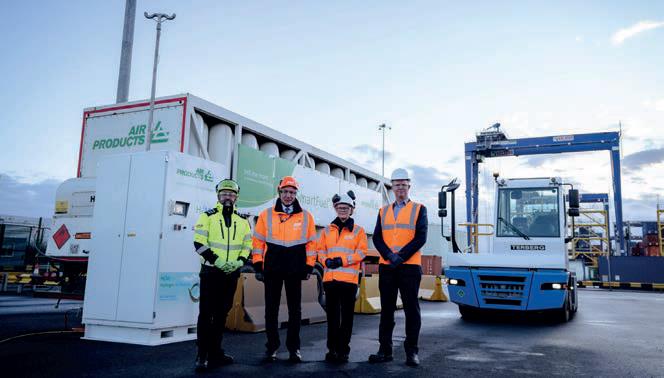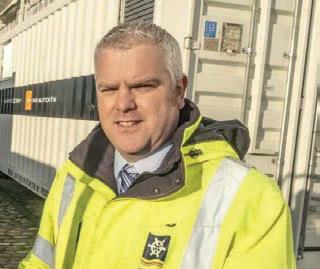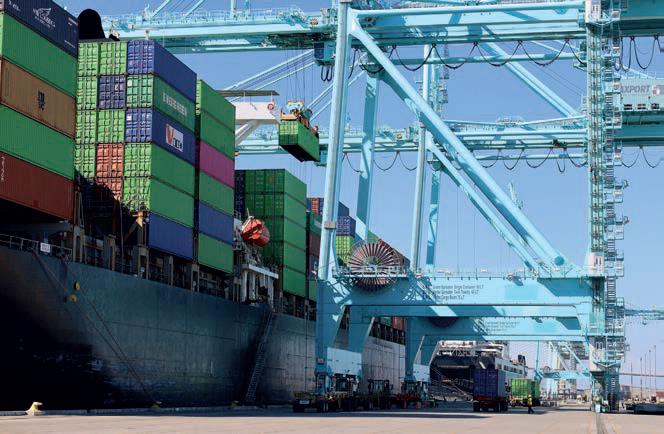Ports and environmental sustainability: The future is green
19 April 2023As operations can impact air quality, water quality and land use, many ports are investing in cleaner technologies and environmentally friendly operating practices to meet federal and international standards. Jenny Eagle investigates.
Ports worldwide are increasingly devoting substantial resources to address the risks associated with extreme weather conditions, such as heatwaves, intense rain/flooding and high winds, as well as the factors affecting supply chains. Today, many have adopted environmental management systems and clean air programmes that guide environmental decision-making.
For example, the Port of Los Angeles Air Quality Monitoring Program has a network of four air monitoring stations that measure a set of air pollutants within the vicinity of Los Angeles Harbor. As part of the programme, meteorological monitoring stations operate adjacent to each air monitoring station, to interpret the air quality data and for use in other port programmes.
In 2021, the port initiated the upgrade of its air monitoring stations and last year completed a procurement process to upgrade all the air quality and meteorological instrumentation and its data communications systems. Installation of the instrumentation is in progress and is expected to be completed this month.
The Port of Los Angeles has monitored air quality in and around Los Angeles Harbor since 2005. The programme supports the port’s commitment to improve air quality within the San Pedro Bay port complex under the Clean Air Action Plan (Caap), by helping to better manage and provide feedback on the port’s air quality improvement efforts.
More recently, the ports of Seattle and Tacoma announced that the 2023 National Defense Authorization Act (NDAA) has now been signed into law, which contains several major policies that will benefit innovation, decarbonisation and habitat programmes at both ports and throughout the Puget Sound. The legislation included the annual Water Resources Development Act (WRDA), the US Maritime Administration (Marad) Reauthorization Act, and the US Coast Guard Reauthorization Act.
“The Port of Seattle and the Northwest Seaport Alliance [the marine cargo operating partnership of the Port of Seattle and Port of Tacoma] thank our state’s Congressional delegation for incorporating provisions in the NDAA that balance the needs of commerce, communities, climate and killer whales,” says Fred Felleman, commissioner, Port of Seattle.
“These provisions include critical funding and collaboration to help ports decarbonise our operations with electricity and alternative fuels that reduce our impacts on the climate and near-port communities. It also increases the ability for ports to work with the coast guard and whale-watching networks to reduce conflicts between ships and vulnerable whale species.”
Provisions that will benefit the region include: a pilot programme on the use of sustainable aviation fuels (SAF), requiring two military bases to develop a plan for implementing SAFs; and expansion of Marad’s Port Infrastructure Development Program to include “shore power at a port that services passenger vessels”, which will allow for federal funding to support the port’s investment in providing shore power at Pier 66. Once completed, all three of the Port of Seattle’s cruise berths will be shore power capable.
A US Center for Maritime Innovation to support the study, research, development, assessment and deployment of emerging marine technologies and practices related to the maritime transportation system, and a Marad study on the “necessary port-related infrastructure needed to support bunkering facilities for liquefied natural gas, hydrogen, ammonia, or other new marine fuels under development”, are also mooted.
“The NDAA legislation includes key provisions that support both environmental and operational activities at the Port of Tacoma and the Northwest Seaport Alliance,” explains Don Meyer, president, Port of Tacoma and co-chair, Northwest Seaport Alliance. “The Tacoma harbour deepening included in the WRDA bill is a significant benefit for maritime trade in the Puget Sound and will ensure our ports remain competitive for years to come.”
The Northwest Seaport Alliance, Port of Seattle and Port of Tacoma made the voluntary commitment to reduce maritimerelated emissions to zero by 2050 or earlier with the Northwest Ports Clean Air Strategy. In October 2021, the Port of Seattle Commission accelerated its climate action goals to be net zero or better for port-owned emissions by 2040. The port also committed to accelerate and expand its goal to reduce emissions from industries operating at its facilities to be carbonneutral or better by 2050.
In Florida, the Port of Jacksonville (JaxPort) is moving increasingly toward electrification of the large cranes that unload cargo from ships and the smaller cranes that shuttle containers around terminal yards. Hydrogen could someday become the fuel of choice for ships that only recently left behind diesel for liquefied natural gas. A federal grant awarded to JaxPort in partnership with Crowley Maritime and SSA Jacksonville will fund that goal by helping to pay for $47m of investments toward lowering emissions of port-related equipment.
For Jacksonville-based Crowley Maritime, its strategy is to achieve net-zero emissions by 2050. President and CEO Tom Crowley, says Crowley is “on a mission to become the most sustainable and innovative maritime logistics company in the Americas” to “meet the climate crisis head on”.
Crowley’s goal would cut greenhouse gas emissions each year through 2050 at a rate equal to removing 900,000 cars annually from the road, according to the company. Crowley, based in Arlington, operates in 36 nations and territories while employing about 7,000 people, so its annual progress reports will show what’s possible for portrelated businesses to accomplish.
“It’s providing ways to partner across the industry that we have not attempted before -ways to partner with customers on new technologies and new skills,” says Meaghan Atkinson, VP, sustainability, Crowley. “It really just provides a lot of opportunities as we move forward.”
Crowley, which ships cargo from Jacksonville to Puerto Rico and the Caribbean, has been part of the city’s port scene for decades and operates out of the Talleyrand terminal. SSA is a newcomer at Blount Island terminal, where it handles ships that deliver cargo to and from Asia.
The companies teamed up with the port authority’s JaxPort Express initiative to win a $23.5m grant from the US Department of Transportation in October. Nationwide, the department awarded about $703m to 41 port projects by using money from the Inflation Reduction Act signed into law by President Joe Biden.
Approximately $150m of the awards were for electrification projects at ports including Jacksonville. Eric Green, CEO, JaxPort, called it a “significant milestone” in building a “port of the future”.
The federal grant will go toward a total of $47m of projects at the Talleyrand and Blount Island terminals for electrified refrigerated container stacks, hybrid electric rubber-tyred gantry cranes, battery-powered electric forklifts and yard tractors, installation of fast-charging stations, and developing a plan for moving the port and local maritime industry toward zero-emission technologies.
The technology coming from the federal grant is already in use on the West Coast and is moving now to East Coast ports, says Nick Primrose, chief of regulatory compliance for JaxPort.
“This is the first of its kind in Florida for such a large public-private partnership investment in low and zero-emission cargo handling equipment,” he says.
He adds, beyond the environmental benefits, increased electrification also has financial advantages because of the high cost of diesel fuel. The new equipment coming to JaxPort will cut diesel fuel usage by 12.3 million gallons over 20 years, Primrose says.
Aside from the new equipment such as rubber-tyred gantry cranes that move around the terminal to move containers, JaxPort has started to modernise the Blount Island terminal during reconstruction of its berths so the bigger dockside cranes that move containers on and off ships can plug into electric power.
Blount Island has three fully electric dockside cranes now and will add three more this month with capacity for ten.
Elsewhere, Konecranes is celebrating after it received an A- rating in CDP’s annual climate programme, recognition of its efforts to make holistic climate disclosures and climate risk and opportunities management a business norm. The measurement is based on the company’s disclosures about its actions to cut emissions, manage and mitigate climate risks, and develop a low-carbon offering.
“This is a great achievement, and I am pleased that our commitment to climate change efforts and our long-term commitment towards sustainability have been recognised. We are in a unique position to help other industries shift to a low-carbon future by offering solutions which intensify decarbonisation and advance electrification,” says Anniina Virta- Toikka, head, sustainability, Konecranes.
“We have a clear climate roadmap for years to come. We are taking action in both our own operations and throughout our value chain.
“In 2022, we started using our first electrified service vehicles and continued conducting energy efficiency improvements in our manufacturing operations. In the value chain, our primary focus is on electrifying our offering while developing digitalisation and automation as well as minimising emissions from steel.”
EUROPEAN ELECTRIFICATION
In Europe, Nidec ASI was recently awarded two turnkey projects for electrification of the quays of the passenger ports of Genoa and Savona in Italy.
The Western Ligurian Sea Port Authority has assigned the executive design and works to the temporary joint venture (TJV) of which Nidec ASI is the leading company, and in which Ceisis and the Molfino & Longo civil engineering firm are consortium partners.
For Genoa, the order was acquired in June and the design phase has already started, while the order for the contract relating to the port of Savona was signed in September. It is estimated that both projects will be completed in two to three years.
Thanks to the electric power supply systems for ships developed by Nidec ASI in Genoa and Savona, it will be possible to reduce emissions and noise pollution with positive impacts on inhabitants and tourists in the areas bordering the two ports, which are both located inside the cities, while at the same time having minimal impact on the operation of the ports.
In Genoa, the project envisages six berths, which will allow the cruise ships and ferries docked at the port to switch off their onboard generators and connect to the electricity grid to meet their operational needs.
The two orders comply with EU directives that, since 2003, encourage ports to adopt quays electrification systems (shore-to-ship) to reduce polluting emissions of vessels in the port, while maintaining heating and air conditioning running, as well as the necessary vessel auxiliary systems. By 2025 this recommendation will become binding for all European ports.
The planned investments for modernising the ports of Genoa and Savona, co-financed by the European Investment Bank (EIB), are worth a total of €789m and include initiatives such as moving the breakwater in Genoa, ‘cold ironing’ (the electrification of the quays), restructuring the port moorings and IT security.
“These ambitious projects confirm our leadership in the development of shore-to-ship systems in Europe and in Italy. The two initiatives where we are protagonists represent a fundamental step in the process aimed at reducing the environmental impact of port activities, a central theme for promoting a sustainable development model in Italy and in Europe and that we trust will kick off many other similar projects for Italian ports, after the Ligurian ones, which have led the way,” says Dominique Llonch, CEO, Nidec ASI.
These new projects – together with other shore-to-ship systems implemented last year in Malta and in southern France, as well as those in the development phase in Greece and Spain, and other major initiatives, such as the supply of battery storage systems for onboard energy for full-electric and hybrid cargo ships, ferries and yachts, and solutions for automating cranes used in ports – allow Nidec ASI to capitalise on the evolution of the maritime and port sector towards all-electric.
In the UK, Associated British Ports (ABP) has become the first British port operator to trial a hydrogen-fuelled tractor at its container terminal at the Port of Immingham, located on the south bank of the Humber Estuary.
The joint pilot project received funding from ORE (Offshore Renewable Energy) Catapult through Innovate UK’s Hydrogen Innovation Initiative (HII), following funding of initial feasibility from the Department for Transport’s Clean Maritime Demonstration Competition.
The hydrogen terminal tractor, made by Terberg, has been tested at the UK’s largest port by volume of tonnage, alongside a mobile hydrogen filling station provided by Air Products.
Simon Bird, regional director, Humber ports at ABP, said: “This demonstration of using hydrogen in port equipment in Immingham has been able to highlight the challenges and benefits of using this zeroemission energy in our port.
“It shows our customers how forward thinking we are in meeting the need to decarbonise in the port and it’s great we’ve been able to collaborate with all the various partners in its delivery.”
“This project excitingly highlights the increasing technology readiness of vehicles utilising hydrogen fuel in UK port operations, creating a clear demand signal for many HII project partners,” adds Lauren Hadnum, ORE Catapult’s clean maritime manager.
“Major learnings from this project will have decarbonisation impacts for port vehicles, vessels and the wider hydrogen supply chain.
“The Humber is well-placed to develop this hydrogen value chain; via offshore wind energy availability, local demand and strong system-level collaborations such as demonstrated in this project.”
The project has been a collaboration between ABP, Terberg, Air Products and ORE Catapult.
In other news, the Port of Leith has become the first large mainland commercial port in Scotland to provide a shore power connection.
The Victoria 1 is the first vessel to receive this kind of connection within the Imperial Dock in the Port of Leith.
The vessel can now switch off all its fossil fuel-powered generators, and with Forth Ports’ electricity being provided through non-fossil fuel generation, the port is making one step forward towards its journey to net-zero.
The electrical network in the port has also been extended and integrated to the vessel’s systems though a PSW Power & Automation shore power transformer.
The set-up is being further developed in the port’s Harbour Berth, where it will be offered to offshore construction vessels that use Leith as their home port.
The Port of Leith is currently undergoing a major transformation to create Scotland’s largest renewable hub – including the development of a new deepwater outer berth that will also be shore power-enabled.
“As a business we are committed to reducing the emissions from our operations and we are encouraging shipping to do the same,” says David Webster, director, energy, Forth Ports.
“This major civil engineering project to introduce shore power in Leith is a significant milestone for our business in Scotland and we are pleased the Victoria 1 is now powered by mains electricity. We look forward to offering shore power to our other vessels visiting the port in 2023.”
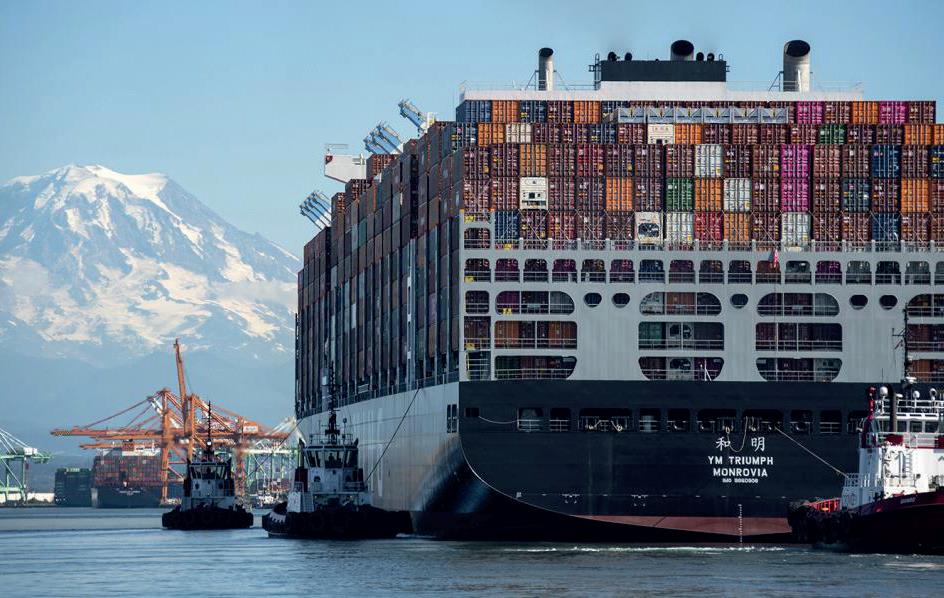 The 2023 National Defense Authorization Act contains policies that will benefit decarbonisation programmes at Seattle.
The 2023 National Defense Authorization Act contains policies that will benefit decarbonisation programmes at Seattle.
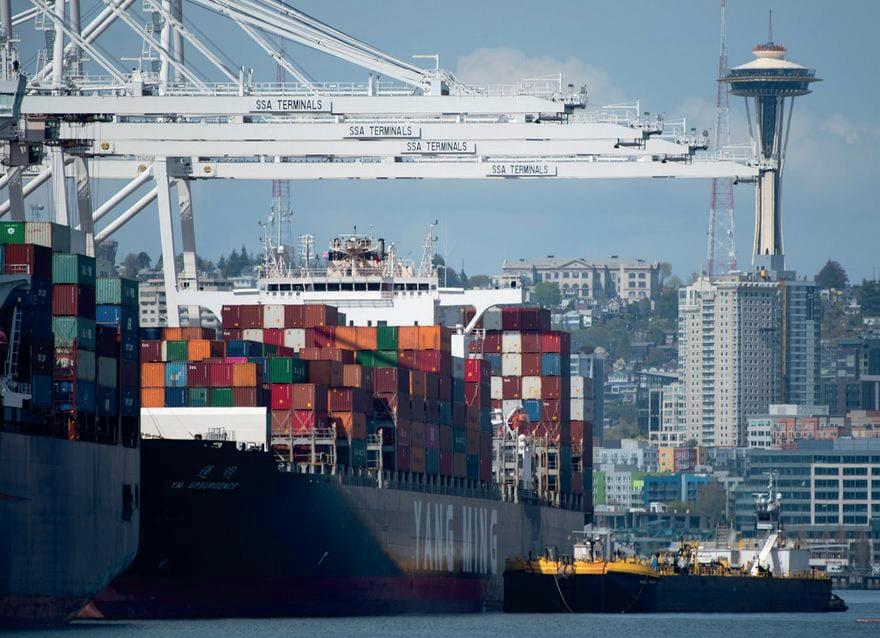 The 2023 National Defense Authorization Act contains policies that will benefit decarbonisation programmes at Seattle.
The 2023 National Defense Authorization Act contains policies that will benefit decarbonisation programmes at Seattle.
